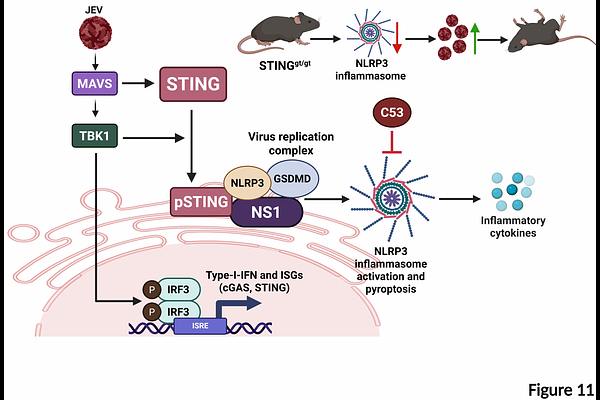STING is a key driver of Japanese encephalitis virus induced inflammatory response

STING is a key driver of Japanese encephalitis virus induced inflammatory response
Chhabra, S.; Patel, D.; Sharma, K. B.; Sah, V.; Harshan, K.; Chauhan, S.; Kalia, M.
AbstractInterferon (IFN) and inflammation are the key early defence mechanisms that combat pathogen infection. The cytosolic DNA sensor cGAS activates immune signaling via the stimulator of interferon genes (STING) protein. Emerging evidence suggests crosstalk between innate immune DNA and RNA sensing, implicating a role of STING protein in RNA virus infection. This study characterizes STING in the context of Japanese encephalitis virus (JEV), an RNA virus of the flaviviridae family. We observe that activation of type I IFN through MAVS is essential for cGAS and STING activation. Knockdown, null mutant and inhibitor studies confirmed that STING restricts JEV replication independently of IFN{beta} signaling and autophagy. Transcriptomic analysis of STINGgt/gt bone-marrow derived macrophages (BMDMs) showed enhanced IFN response, but reduced activation of inflammatory cytokines and chemokines. Phosphorylated STING was recruited on the virus replication complex (RC), marked by the non-structural protein NS1, subsequently triggering the assembly of the NLRP3 inflammasome on the RC. STING proton channel activity was essential for NLRP3 inflammasome activation, IL-1{beta} production, and activation of pyroptotic cell death markers. Stinggt/gt mice, showed higher viremia, earlier disease onset, reduced survival, and decreased brain inflammation. These findings establish STING as a key regulator of JEV-induced inflammation and antiviral defence.